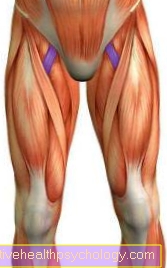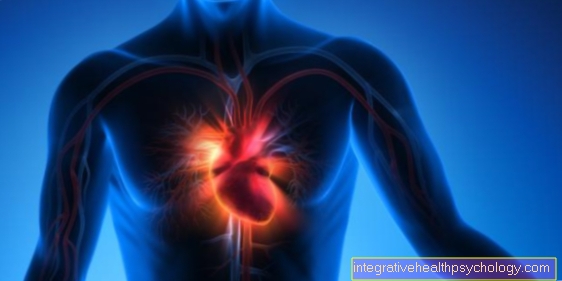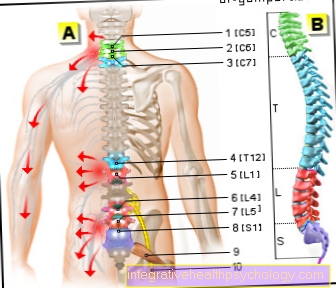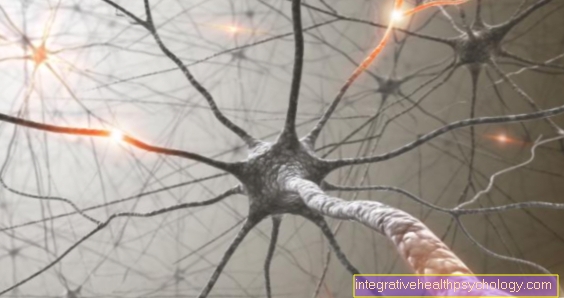Pain medication - basics of drug pain management
What pain medication are there?
Numerous drugs are now available for the treatment of pain, from drugs freely available in pharmacies such as paracetamol, aspirin or ibuprofen to very strong prescription drugs such as oxycodone or fentanyl.

Fortunately, there is a scheme by which pain medication can be broken down so that you can better assess how strong an active ingredient really is in the end. Pain medication is roughly divided into:
-
Non-opioid analgesics
-
low potency opioids
-
highly potent opioids
-
(Co-analgesics)
Stage 1: non-opioid analgesics
The name of non-opioid analgesics is made up of painkillers that are not opioids and are therefore on level 1 of pain medication.
They include v. a. the so-called non-steroidal anti-inflammatory drugs (NSAIDs for short, e.g. ibuprofen, diclofenac, naproxen, etc.). These are primarily used in pain therapy, but are also used in the treatment of rheumatism and have anti-inflammatory and antipyretic properties. Aspirin (active ingredient: ASA) also has a so-called thrombocyte aggregation-inhibiting effect, which is particularly important in diseases of the heart. Due to their side effect profile, NSAIDs are given less in cardiovascular diseases. Aspirin, which is used to thin the blood, is an exception.
Important effects of NSAIDs:
-
Pain relief
-
Anti-inflammatory
-
Lowering of fever
-
Blood thinning (especially aspirin)
Important side effects of NSAIDs:
-
Stomach ulcers and bleeding
-
Inflammation or irritation of the stomach lining may worsen
-
Kidney failure
NSAIDs also include so-called coxibs. However, these have a slightly different mechanism of action from the other NSAIDs and “only” have an analgesic and anti-inflammatory effect. In addition, although they have fewer gastrointestinal side effects, they are associated with an increased risk of cardiovascular events, so that many coxibs have now been withdrawn from the market.
Other pain relievers that also belong to level 1 are paracetamol and metamizole (also known under the trade name Novalgin).
Paracetamol, like NSAIDs, relieves pain and has antipyretic properties, but does not counteract inflammation. The active ingredient is considered to be well tolerated and, if necessary, is the means of choice during pregnancy and breastfeeding.
Metamizole has the strongest analgesic and antipyretic effects of the level 1 pain relievers. Although it has only a minor anti-inflammatory effect, it also relieves cramps.
Level 2: low potency opioids
Opioids are divided into low and high potency opioids based on their analgesic effect.
Exemplary low-potency opioids are:
-
Tilidine
-
Tramadol
-
Dihydrocodeine
If the level 1 pain relievers do not provide adequate pain relief, level 2 opioids are used first. These are either issued in such a way that they can be (acutely) taken if necessary, or a fixed schedule is provided for taking them. If they are to be taken regularly, so-called prolonged-release tablets are usually used, in which the preparations develop their effect over the day.
Level 3: Highly Potent Opioids
Finally, the pain medication at level 3 includes the highly potent opioids. These include a .:
-
Morphine
-
Hydromorphone
-
Oxycodone
-
Fentanyl
These are used when level 2 painkillers are no longer effective. There are also different dosage forms here. For example, morphine can be given as a tablet or injected. Fentanyl can also z. B. can also be prescribed as a plaster, whereby the active ingredient is released over a longer period of time (up to 3 days).
Side effects of opioids:
Opioids can have a variety of side effects. Some common (but by no means all) are listed below:
-
Tiredness / drowsiness
-
Drop in blood pressure
-
Nausea & vomiting
-
constipation
The potential for dependence on opioids should be particularly emphasized at this point. This can be expressed in three ways:
-
tolerance
-
physical addiction
-
psychological addiction
Tolerance is roughly understood as a habituation effect - after some time of opioid use, more active ingredient must be taken at some point in order to achieve the same effect. If the dose is not increased, at some point z. B. the pain relief. However, the dose should not be adjusted without authorization.
Physical dependence describes the fact that we can become physically dependent on opioids and, accordingly, withdrawal symptoms occur when we stop taking the drug. These include a. Tremors, racing heart, vomiting, diarrhea, and a bad mood.
In most cases, however, psychological addiction is the most persistent form. It is related to different effects of the opioid. Because the psychologically addictive effects are closely related to the condition of the addict and include, among other things. a. Reassurance, well-being or euphoria. This can lead to what is known as “craving” - this is how the doctor describes the irresistible desire for the drug that has been taken for a long time. This “craving” also causes most relapses.
Extra: co-analgesics
Depending on what is responsible for your pain, the individual levels of drug pain treatment can be supplemented with so-called co-analgesics. These roughly include the following drug groups:
-
Antidepressants
-
Muscle relaxants
-
Glucocorticoids
It is not uncommon for chronic pain to lead in the long term to depressive moods or solid depression. Supportive antidepressants can be given in this context to break the vicious circle of pain and depression.
Many forms of pain, especially back pain, have their origin in tense or permanently tense muscles. In this context, muscle relaxants can relax the muscles and thereby relieve pain at the same time. Pain relief can be achieved quickly, especially in combination with level 1 pain medication.
Last but not least, the glucocorticoids belonging to the steroid hormones should be mentioned here. These have anti-inflammatory and analgesic effects, but have potentially dangerous side effects (including high blood pressure, osteoporosis, abnormal weight gain). The best known representative of the glucocorticoids is cortisone.
Less side effects from adjuvants
So-called adjuvants can reduce the side effects of pain medication. They can be used both as a precaution and to treat side effects that have already occurred. Examples of such adjuvants would be e.g. B. Proton pump inhibitors such as pantoprazole - this drug can counteract the side effects of NSAIDs, which can cause stomach ulcers or bleeding if taken for a long time.





























